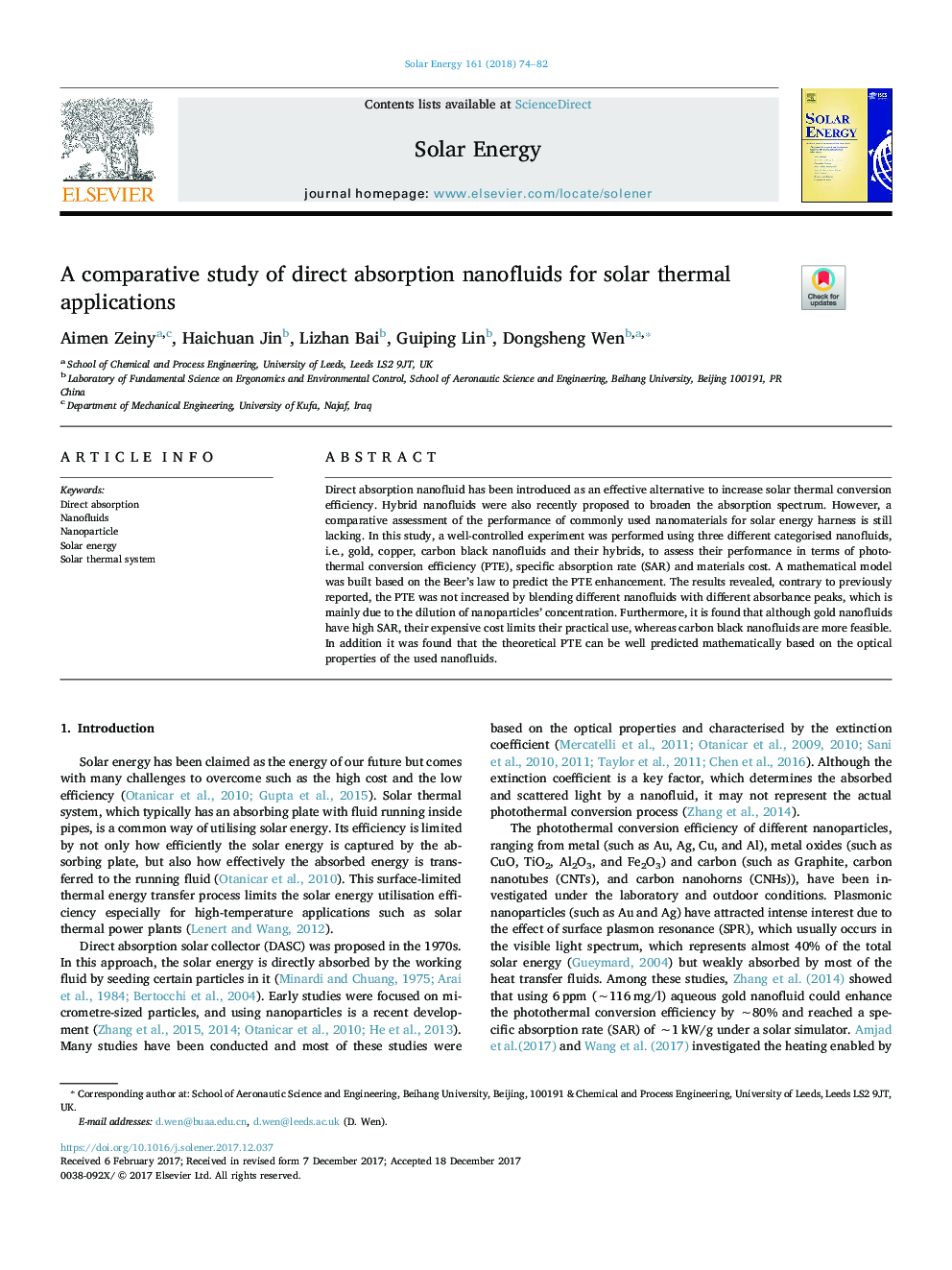| Article ID | Journal | Published Year | Pages | File Type |
|---|---|---|---|---|
| 7935716 | Solar Energy | 2018 | 9 Pages |
Abstract
Direct absorption nanofluid has been introduced as an effective alternative to increase solar thermal conversion efficiency. Hybrid nanofluids were also recently proposed to broaden the absorption spectrum. However, a comparative assessment of the performance of commonly used nanomaterials for solar energy harness is still lacking. In this study, a well-controlled experiment was performed using three different categorised nanofluids, i.e., gold, copper, carbon black nanofluids and their hybrids, to assess their performance in terms of photothermal conversion efficiency (PTE), specific absorption rate (SAR) and materials cost. A mathematical model was built based on the Beer's law to predict the PTE enhancement. The results revealed, contrary to previously reported, the PTE was not increased by blending different nanofluids with different absorbance peaks, which is mainly due to the dilution of nanoparticles' concentration. Furthermore, it is found that although gold nanofluids have high SAR, their expensive cost limits their practical use, whereas carbon black nanofluids are more feasible. In addition it was found that the theoretical PTE can be well predicted mathematically based on the optical properties of the used nanofluids.
Related Topics
Physical Sciences and Engineering
Energy
Renewable Energy, Sustainability and the Environment
Authors
Aimen Zeiny, Haichuan Jin, Lizhan Bai, Guiping Lin, Dongsheng Wen,
